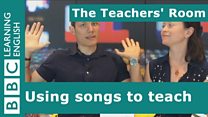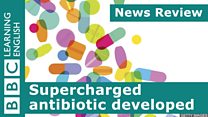Unit 19: English You Need
Exams, news, pronunciation, teachers' tips, learners' questions
Select a unit
- 1 English You Need
- 2 English You Need
- 3 English You Need
- 4 English You Need
- 5 English You Need
- 6 English You Need
- 7 English You Need
- 8 English You Need
- 9 English You Need
- 10 English You Need
- 11 English You Need
- 12 English You Need
- 13 English You Need
- 14 English You Need
- 15 English You Need
- 16 English You Need
- 17 English You Need
- 18 English You Need
- 19 English You Need
- 20 English You Need
- 21 English You Need
- 22 English You Need
- 23 English You Need
- 24 English You Need
- 25 English You Need
- 26 English You Need
- 27 English You Need
- 28 English You Need
- 29 English You Need
- 30 English You Need
Session 4
Welcome to The Teachers’ Room. The show all about teaching practice. Grab a cup of coffee, pull up an armchair and relax. Learn something new, remember something fundamental or just have a giggle.
Activity 1
The Teachers' Room
Teaching models 1
Dan and Sian talk about 3 teaching models
Watch the video and complete the activity

___________________________________________________________________
Did you like that? Why not try these?
____________________________________________________________________________________
Teaching models
A teaching model is a way of structuring a lesson or introducing a language point. It is useful to have a range of these techniques since a good teacher can account for individual differences in learning style and level of knowledge.
PPP
Present, practise, produce is the most common lesson model. First, the teacher presents a piece of language, possibly in a reading or a listening, but equally as a sentence on the board. The teacher then fully explains the language point, whether grammar, vocabulary, pronunciation etc. Students then do a controlled practice stage, attempting to use the structure in a controlled manner. Then they will do a freer practice stage.
This style is a logical progression from no knowledge to knowledge so it’s great for beginners or the first time students encounter a structure.
TTT
Test, teach, test. First, students are assessed on their level of knowledge, either by being asked to use the particular language point of the lesson or by being asked for what knowledge they have on it. The teacher observes this and then teaches based on the assessment. After this, students again perform a task, which could be the same or different, incorporating the new teaching with their current knowledge.
This model is good for students who already have some language knowledge, which makes it great for revision. It also allows for a more targeted teaching style since it attempts to address the problems which students are having. It can also save time since it is not necessary to teach everything about the target structure – only what students lack.
Guided Discovery
Also known as inductive learning. Language is presented to the students, who are then asked to work out the rules behind the language. This is accomplished through a combination of team work, noticing, logical inference and guiding prompts by the teacher, who does not give any answers away but facilitates their understanding. Then controlled and freer practice stages can be followed. This model puts the responsibility for learning on the students and lets them take control – it’s great for confidence building.
To do
Try our quiz to see if you've picked up our tips.
The Teachers' Room Quiz
5 Questions
Check what you've learned by selecting the correct answer to each question.
Help
Activity
Check what you've learned by selecting the correct answer to each question.
Hint
Students usually need to have something shown to them and then attempt to use the structure.Question 1 of 5
Help
Activity
Check what you've learned by selecting the correct answer to each question.
Hint
In this model the teacher guides students, but they must discover the answers themselves.Question 2 of 5
Help
Activity
Check what you've learned by selecting the correct answer to each question.
Hint
This involves assessing the students' current abilities and then adapting the lesson to the results. Then we assess them again.Question 3 of 5
Help
Activity
Check what you've learned by selecting the correct answer to each question.
Hint
Beginner students can have no knowledge to draw upon. Which method explicitly provides everything which is needed?Question 4 of 5
Help
Activity
Check what you've learned by selecting the correct answer to each question.
Hint
First we test to see what the students know. How is that an advantage?Question 5 of 5
Excellent! Great job! Bad luck! You scored:
Get involved
Well, those were just a few ideas that we here at BBC Learning English had, but we know that you teachers out there have lots of fantastic ideas too, and we’d like you to share them with us and everybody else.
If you have a great tip or technique for introducing language, or anything else, please email us at learningenglish@bbc.co.uk. Your email could be posted here on this page, or may even be mentioned in our show.
We are also looking for video tips to include in the programme. In order to do this, please include whether or not you’d like to be included for video with your tip, and we'll get in touch with you. You could be rewarded with a T-shirt for your efforts.
End of Session 4
Next up is Learners' Questions. What will this week's Learner Question be? Whatever it is, Dan's here with the answer! Join us in Session 5 to find out.
Session Vocabulary
Teaching models 1
- PPP: Present, practise, produce
- TTT: Test, teach, test
- Guided discovery


